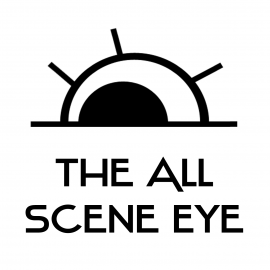Photo by Mauricio Castro
In press surrounding America and Afterwards, the latest album by D.C. experimental pop ensemble The North Country, bandleader Andrew Grossman consistently highlighted one lyric above all as its most important: “To make good on the future, you gotta look the present in the face.” That reality grounds the record’s utopian vision, as it looks ahead to a time when humanity outgrows its obsession with borders and systems of oppression–a vision made most explicit in the shiny synth groove of the first track, “Future Humans.” Grossman wrote the song years ago, but it was no less relevant when the record dropped in June.
“The song is really about moving beyond the archaic and barbaric things we do as a species, namely racism, sexism, nationalism, etc,” says Grossman. “All of those things are still unfortunately in great abundance in the world, and the more peaceful and empathetic people of the future are still just a dream, so I guess my sentiment towards the song is the same as when I wrote it. I’d like to think the future humans of the song would have handled COVID better than the current humans.”
In filming the music video for “Future Humans,” The North Country did their part toward that end. They recorded their segments separately, each band member in their own home, with Grossman and guitarist Jon Harmon editing the footage into one finished piece. “Before the lockdowns, we’d played the song live many times, so we all had our parts down,” says Grossman. “We basically just started with drums and went from there, each person recording their parts to all the parts recorded before them.”
The remote-recorded live take comes off as even more urgent than the studio version. Loaded with amped-up outdoor drum fills and a grittier bass tone, it hones the chrome-slick surface of the original into a keen cutting edge. Singer Margot MacDonald also brought it to life with choreography for keyboard player Laurel Halsey, Grossman, and herself. Without her bandmates in the room, she had to get creative in plotting it out.
“Without the option to play with movement in person, I just listened through the song on repeat with my eyes closed, imagining what might look neat with us all on a split-screen. The weirdest part was translating choreography over email–and alarming my housemates with incessant head-turning,” she says. “I sent them each a video sample and created a symbol key to give a visual cue for each move, adding that over the lyric sheet.”
With a little flexibility and imagination, they made it work and had a great time in the process.
“It was so fun to have Laurel and Andrew on board and excited for the idea,” says MacDonald. “They really rolled with the punches and nailed it.”
Until it’s safe to go back to music as usual–whatever that ends up looking like–rolling with the punches and accepting limitations is the only option for most. But that’s also another expression of America and Afterwards’ central thesis: there’s no path to a brighter pandemic-free future without a realistic approach to the here-and-now. As Grossman says of the socially-distanced project: “It’s definitely less fun collaborating remotely than in person, but it’s definitely better than not at all.”
To keep up with blog updates, follow The All Scene Eye on Twitter or Facebook
